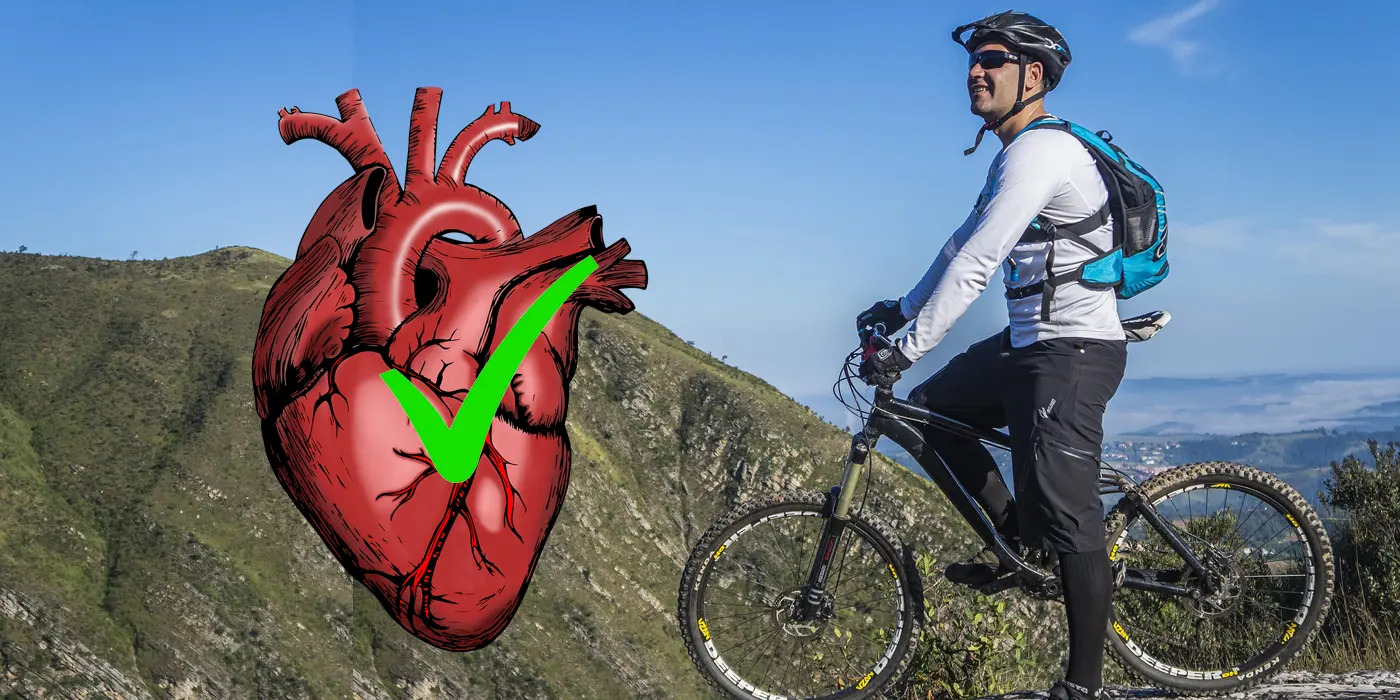Is bike riding Cardiovascular?
Bike riding, also known as cycling, is a popular form of exercise that can offer numerous physical and mental health benefits. One of the primary benefits of bike riding is its potential to improve cardiovascular health. This article discusses the science behind bike riding as a cardio exercise and its impact on overall health.
What is Cardiovascular Exercise?
Exercise that causes a sustained increase in heart rate and breathing rate is referred to as cardiovascular exercise, often known as aerobic exercise. Cardio workouts can assist the cardiovascular system, which consists of the heart, lungs, and blood vessels function more effectively. Heavily muscled groups like the legs, back, and arms must use for these workouts, which can perform at different intensities and for various lengths of time.
Some examples of cardiovascular exercise include walking, running, swimming, dancing, and cycling. These activities can help improve endurance, burn calories, and reduce the risk of chronic diseases.
How Does Bike Riding Improve Cardiovascular Health?
Cycling is a low-impact, aerobic exercise with numerous advantages for cardiovascular health. It is a form of exercise that can be enjoyed indoors or outdoors, alone or with friends, and at varying intensity. Below are some ways in which bike riding can help improve cardiovascular health:
Increases Heart Rate:
When you ride a bike, your heart rate increases, which can help strengthen the heart muscle. The heart is a muscle that pumps blood to the rest of the body, and regular cardiovascular exercise can help improve its efficiency.
Improves Blood Flow:
Bike riding can help improve blood flow throughout the body. Your blood vessels enlarge due to exercise, which allows more blood to flow through them. This increased blood flow can help deliver oxygen and nutrients to the muscles, brain, and other organs, improving overall health.
Lowers Blood Pressure:
High blood pressure, or hypertension, can increase the risk of heart disease, stroke, and other health problems. By enhancing blood vessel function and lowering bodily inflammation, regular bike riding can help decrease blood pressure.
Reduces Risk of Heart Disease:
Cardiovascular disease is the leading cause of death worldwide. Regular bike riding can help reduce the risk of heart disease by improving cardiovascular health and reducing risk factors such as high blood pressure, high cholesterol, and obesity.
Burns Calories:
Bike riding is a form of exercise that can help burn calories and promote weight loss. Obesity is a risk factor for several chronic diseases, including heart disease, diabetes, and cancer. By promoting weight loss, bike riding can help reduce the risk of these diseases.
Increases Endurance:
Cycling can help you develop your endurance, which is your capacity for long-term physical exercise. Endurance exercise can help improve cardiovascular health by increasing the heart’s ability to pump blood and improving oxygen delivery to the muscles.
Reduces Stress:
Exercise can help reduce stress and improve mental health. Bike riding can be a fun and relaxing way to gain exercise and enjoy the outdoors. Research has demonstrated that regular exercise enhances mood, lowers anxiety and depressive symptoms, and enhances the quality of life.
How to Make Bike Riding a Cardio Workout?
It’s crucial to think about the time and intensity of the exercise to turn biking into a cardio workout. Below are some tips for making bike riding a more effective cardiovascular exercise.
- Increase Intensity: To increase the intensity of bike riding, try riding at a faster pace or pedaling uphill. It can help raise the heart rate and provide a more challenging workout.
- Incorporate Intervals: Intervals are short bursts of high-intensity exercise followed by periods of rest or low-intensity exercise. Incorporating intervals into a bike riding workout can help improve cardiovascular fitness and burn more calories.
Ride for Longer Durations:
It’s crucial to ride your bike for a while period of time if you want to increase the cardiovascular benefits. The American Heart Association recommends at least 150 minutes of moderate-intensity aerobic exercise per week, which can break down into 30 minutes of exercise per day, five days per week. Consider setting a goal to gradually increase the duration of your bike rides, starting with shorter rides and working your way up to longer rides.
- Consider Resistance Training: Strength and endurance in muscles can increase through resistance training. It can help improve performance during bike rides and make them more challenging.
- Monitor Heart Rate: While riding a bike, keeping an eye on your heart rate might help you maintain the proper level of exertion. Subtract your age from 220, multiply that result by 0.6, and 0.9, which is your ideal heart rate. It will give you several heart rates to aim for during exercise.
- Stay Hydrated: It is crucial to stay hydrated during exercise, especially during longer bike rides. Bring a water bottle with you and drink water regularly throughout the ride.
- Warm-Up and Cool-Down: It is crucial to warm up and cool down before and after exercise. It can help prevent injury and improve performance. Consider starting with a few minutes of light exercises, including a slow bike ride or stretching, before gradually increasing the intensity of the workout.
Conclusion
Bike riding is a fun and effective way to improve cardiovascular health. It can help increase heart rate, improve blood flow, lower blood pressure, reduce the risk of heart disease, burn calories, increase endurance, and reduce stress. To make bike riding a more effective cardiovascular workout, consider increasing the intensity and duration of the exercise, incorporating intervals, resistance training, and monitoring heart rate, staying hydrated, and warming up and cooling down. Never begin a new fitness program before talking to a medical expert, especially if you have any underlying health issues.
